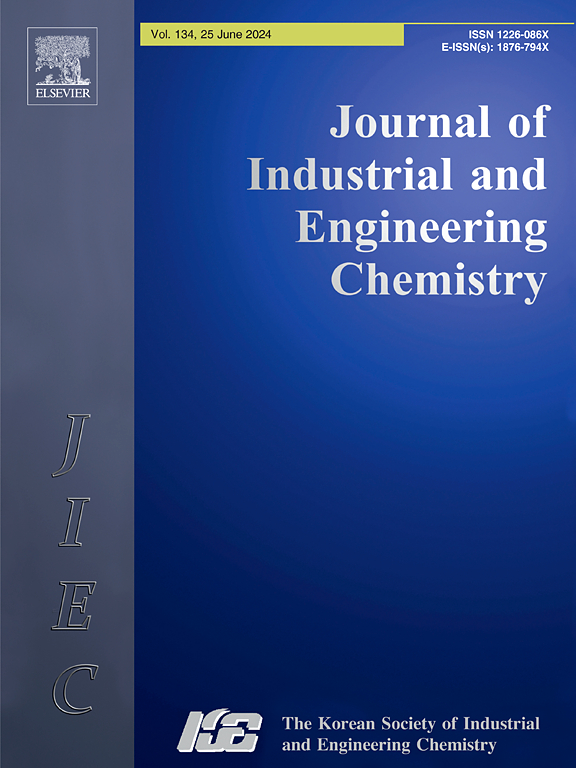Optimization-driven modelling of hydrochar derived from fruit waste for adsorption performance evaluation using response surface methodology and machine learning
IF 5.9
3区 工程技术
Q1 CHEMISTRY, MULTIDISCIPLINARY
Journal of Industrial and Engineering Chemistry
Pub Date : 2025-01-25
DOI:10.1016/j.jiec.2024.06.042
引用次数: 0
Abstract
This study aims to explore the potential of integrating Design of Expert (DOE) with Machine Learning (ML) to optimize and predict the adsorption process of solid adsorbent The prediction and optimization of adsorption performance can be improvised using statistical analysis and advanced predictive tools, resulting in substantial cost and energy savings. Firstly, the Response Surface Methodology-Central Composite Design (RSM-CCD) model was used to design and optimize the experiments on the adsorption of cationic dye using biomass-hydro char. Secondly, Random Forest (RF) was used to train the experimental results of RSM-CCD. It is well-suited for small datasets, withstands noise, and effectively reduces overfitting to predict adsorption performance. RF model demonstrated excellent accuracy, achieving a removal efficacy of 97.4 % with a significant R2 value of 0.9981 compared to the RSM-CCD, which had a removal efficiency of 95.6 % and R2 0.9372. The physicochemical analysis also shows the novel hybrid hydrochar from fruit waste exhibits remarkable characteristics, including a higher content of carbon (78 %) and a surface area of 670 m2/g. In summary, RSM-CCD with ML provides precise optimization and predictions of the adsorption efficacy of the novel hydrochar. This has significant value for industrial applications in the field of material discovery.

利用响应面方法学和机器学习为水果废料衍生的水炭建立优化驱动模型,以进行吸附性能评估
本文章由计算机程序翻译,如有差异,请以英文原文为准。
求助全文
约1分钟内获得全文
求助全文
来源期刊
CiteScore
10.40
自引率
6.60%
发文量
639
审稿时长
29 days
期刊介绍:
Journal of Industrial and Engineering Chemistry is published monthly in English by the Korean Society of Industrial and Engineering Chemistry. JIEC brings together multidisciplinary interests in one journal and is to disseminate information on all aspects of research and development in industrial and engineering chemistry. Contributions in the form of research articles, short communications, notes and reviews are considered for publication. The editors welcome original contributions that have not been and are not to be published elsewhere. Instruction to authors and a manuscript submissions form are printed at the end of each issue. Bulk reprints of individual articles can be ordered. This publication is partially supported by Korea Research Foundation and the Korean Federation of Science and Technology Societies.

 求助内容:
求助内容: 应助结果提醒方式:
应助结果提醒方式:


